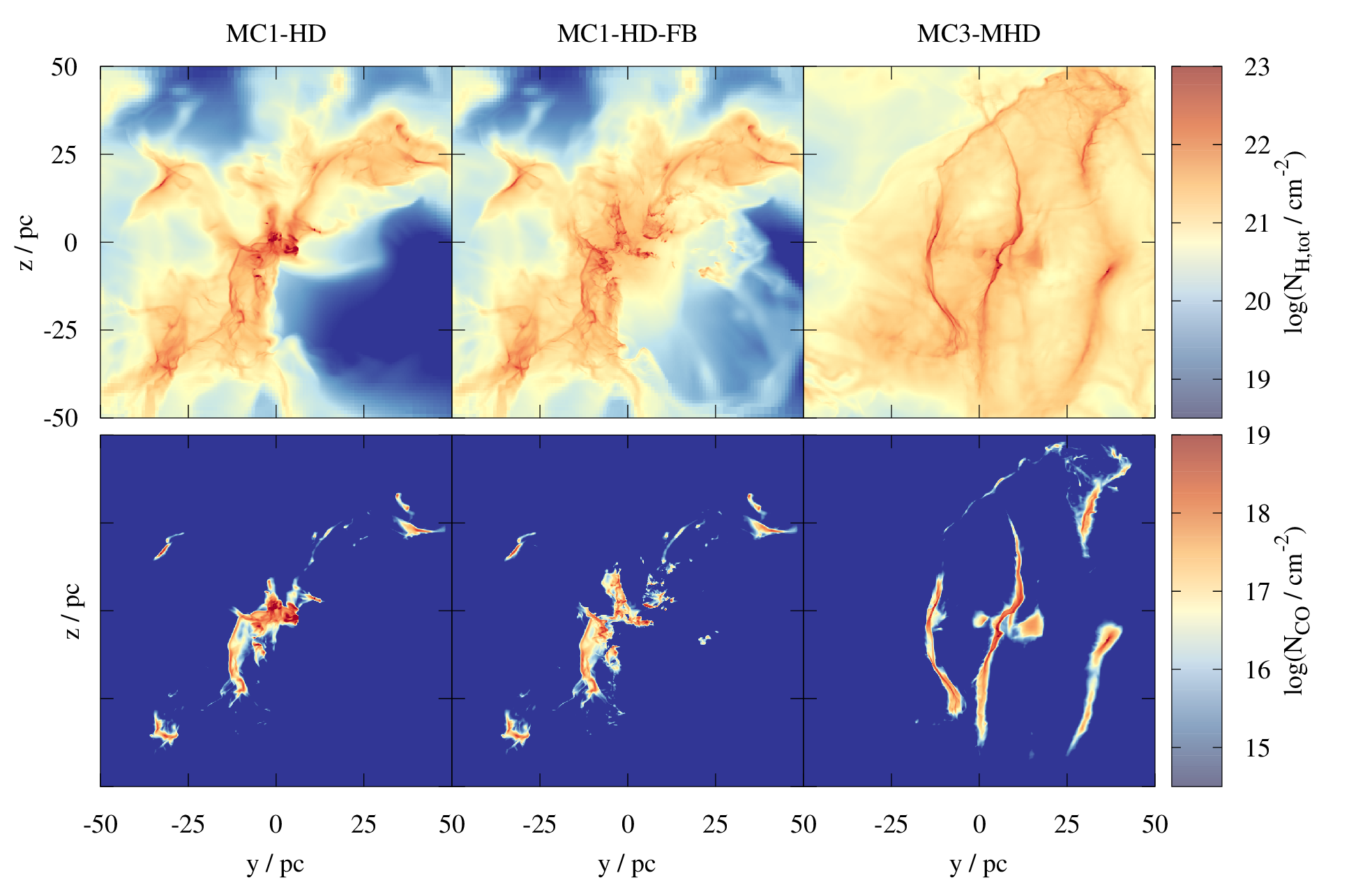Impact of B fields and radiative feedback on CO emission
Within the SILCC-Zoom project, we study the impact of magnetic fields and radiative stellar feedback on the emission of CO using the CO, J=1-0 line. In Seifried et al., 2019 ( arxiv:1906.01015 ), we present a detailed analysis of the CO emission and its dependence on the local cloud properties.
We show that CO-bright gas is associated with gas below a temperature of ~50 K and above a density of ~$300 cm^{-3}$. The amount of CO-dark gas scales with the amount of gas at low visual extinction ($A_V < 1.5$) and a significant fraction (up to 65%) of the $H_2$ can be CO-dark. We also show that the large range of cloud conditions causes the $X_{CO}$ factors of the various clouds to have a large spread of up to a factor of 4 around a fiducial value of about $1.5 \times 10^{20} cm^{-2} (K km s^{-1})^{-1}$. This significantly affects the accuracy of determining the $H_2$ mass of molecular clouds and their virial state.
In order to overcome this problem, we suggest a new method to determine the $H_2$ mass of molecular clouds. It relies on the availability of CO, J=1-0 observations and $A_V$ maps. It reduces the uncertainty of the clouds’ overall $H_2$ mass to a factor of ~1.8 and is also applicable for sub-pc-scaled structures of the clouds.
 Figure: Column density of hydrogen nuclei (top) and CO (bottom) for two runs without magnetic fields without (left) and with feedback (middle), and one run with magnetic fields (right). CO shows a significantly more compact distribution than that of the total gas leading to a significant amount of CO-dark gas, in particular in the outer regions of the clouds.
Figure: Column density of hydrogen nuclei (top) and CO (bottom) for two runs without magnetic fields without (left) and with feedback (middle), and one run with magnetic fields (right). CO shows a significantly more compact distribution than that of the total gas leading to a significant amount of CO-dark gas, in particular in the outer regions of the clouds.